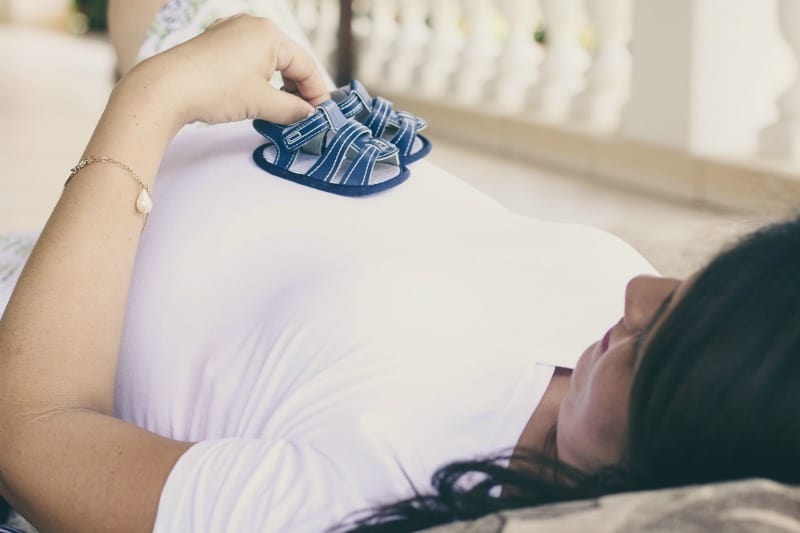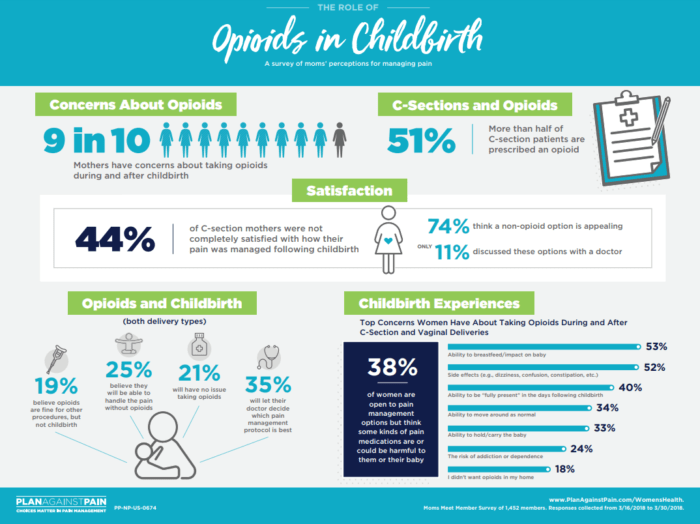Last Updated on June 24, 2019 by Ellen Christian
Are you wondering about pain after C-section? There are all sorts of things to consider when you’re planning for an upcoming surgery (C-section or otherwise). Marty has had several back operations and planning for his surgery helped us have a smooth transition both before and after his trip to the hospital. We had to think about how much time he’d need off from work and how best to make life easier for him when he returned home. But, the one thing we really didn’t think about was how his pain would be managed. Compensation for this post was provided.
Posts may be sponsored. This post contains affiliate links, which means I will make a commission at no extra cost to you should you click through and make a purchase. As an Amazon Associate I earn from qualifying purchases.
Pain After C-Section and Recovery Tips
Whether you’re heading to the hospital for a back surgery or a C-Section, you’ll want to give some thought to your pain management plan. Opioids, also called prescription painkillers or narcotics, are often associated with pain control after surgery. But, these potent medications can also cause unwanted side effects like nausea, constipation, and vomiting.
Plus, their use carries risks like dependence, misuse, and addiction. Did you know that one in 10 patients become addicted to or dependent on opioids after surgery? That’s why it’s important to know the right questions to ask your doctor and check to see if a non-opioid option is available. Here are a few questions you need to discuss with your doctor when planning your C-section.
Discomfort
How much discomfort is usually associated with this procedure? Many factors will influence this including where your surgery is, how it’s done, and how your body responds to pain medications. These things can all affect how you feel.
Pain Management
Your surgeon may give you a variety of different medications before, during, and after surgery to minimize or eliminate the need for opioids. You should ask your doctor what type of non-opioid options are available.
Contraindications
Ask your surgeon what type of information he needs to know to provide a custom pain management plan. You should share things like your medical history, allergies, breathing issues, stomach issues, history of substance abuse, and your current medications.
Pain after C-Section
Talk to your doctor about the kinds of medications you will receive at home and what happens when the medications from your surgery wear off. He’ll help you understand what type of pain you can expect to have at home and how best to manage it.
Did you know that more than 1 in 3 (36%) women did not have a birth plan in place before they headed to the hospital? Creating a birth plan, including pain management options, is one of the things that should be taken care of before your due date. More than 1 in 3 women had C-section deliveries. Overall, 1 in 5 C-sections were not planned which is why it’s vital to have this discussion with your doctor.
Just a few of the concerns women had regarding opioids and childbirth include breastfeeding and the impact on their baby, side effects, and the risk of addiction. Despite these concerns, more than half of C-section patients are prescribed an opioid. A survey of moms’ showed that 75% think a non-opioid option is appealing. But, only 11% discussed these options with a doctor. Check out a few of the facts I learned about pain after C-section in the infographic below.
After C-Section recovery tips
Speak to your doctor about the dos and don’ts after C-section to help with your pain management and recovery. At the very least, you should take it easy and avoid heavy housework. You will want to be sure to get out of bed (when the doctor says you should) and begin to move around carefully. Once you’re home, plan to have everything you need near your bed for easy access. Stock up on healthy snacks, comfortable clothes, and baby items. Don’t push. It will take time to recover. Accept help from friends and family whenever you can. Plan a few simple crockpot meals for the first few days you’re home.
Women are prescribed nearly twice as many prescription opioids as men after surgery. But, there are other options. You can visit planagainstpain.com for information on the non-opioid pain-relieving options following C-section surgery.

Ellen is a busy mom of a 24-year-old son and 29-year-old daughter. She owns six blogs and is addicted to social media. She believes that it doesn’t have to be difficult to lead a healthy life. She shares simple healthy living tips to show busy women how to lead fulfilling lives. If you’d like to work together, email info@confessionsofanover-workedmom.com to chat.





I had an unplanned c section with my one and only, and we were not prepared. Luckily, my pain was not too bad. However, there was a lot of it, and you are so uncomfortable. I am glad I was able to handle it fairly well with a lot of help from my nurses. They were really awesome at the hospital I went to, and they took great care of us.
That’s so awesome to hear. Good care can really make a world of difference.
My dtr had 2 c-sec & one also carried with it tumor removal on an ovary which made the surgery longer & recovery longer. Both were painful & still have lasting effect from the surgery & pregnancy. Much more so than regular child birth.
I’m sure that must have been!